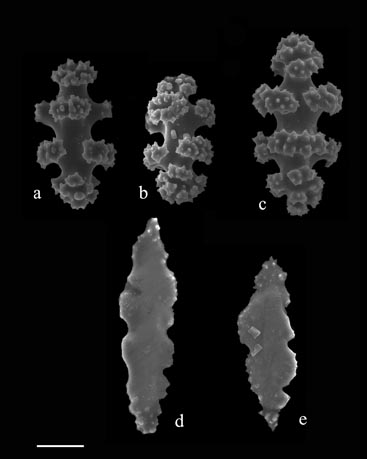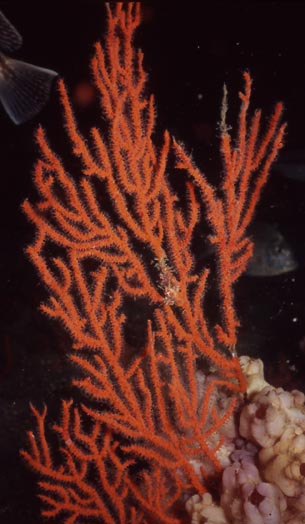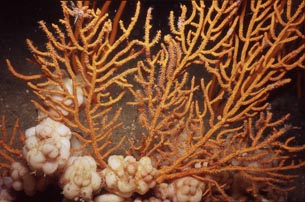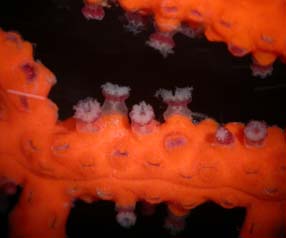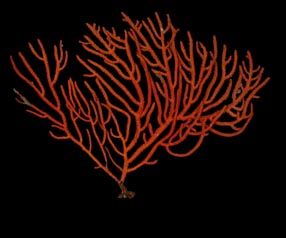CONTENTS
Introduction
The South Atlantic Bight
Methods
Octocoral Morphology
Glossary
Gorgonacean
Bauplan
see this for keys
Notes on the Species
Carijoa
riisei
Scleranthelia
rugosa
Telesto fruticulosa
Telesto nelleae
Telesto sanguinea
Bellonella rubistella
Pseudodrifa nigra
Nidalia occidentalis
Iciligorgia schrammi
Diodogorgia
nodulifera
Titanideum
frauenfeldii
Muricea pendula
Thesea nivea
Bebryce cinerea
Bebryce parastellata
Scleracis guadalupensis
Paramuricea sp.
Leptogorgia hebes
Leptogorgia punicea
Leptogorgia
cardinalis
Leptogorgia virgulata
Leptogorgia setacea
Leptogorgia euryale
Viminella
barbadensis
Renilla reniformis
Sclerobelemnon
theseus
Stylatula elegans
Virgularia presbytes
| Guide
to the Shallow Water (0-200 m) Octocorals of the South Atlantic
Bight.
S. T. DeVictor
& S. L. Morton, 2007
Leptogorgia hebes
Verrill, 1869 Remarks. Leptogorgia hebes
is a very common species in the shallow SAB and can be found on
hardbottom or reef environments along with Titanideum frauenfeldii
and Leptogorgia virgulata. The colonies reach moderate
size and take on a fan-like form, pinnately branching in one plane.
The calyces are hemispherical near the main branch and less distinct
near the terminal ends of the twigs, and calyx opening is slit-like.
There is often a distinct groove that runs down two sides of the
slightly flattened branched. Terminal twigs are 1-2 mm, while branches
near base may be up to 6 mm. Atlantic distribution: Virginia to north Florida, 8-116 m; Gulf of Mexico, 0-37 m; Aruba, unknown depth; Brazil (unknown depth) (Deichmann, 1935; Bayer, 1961; NMNH collections; SERTC collection).
|
|
 |
